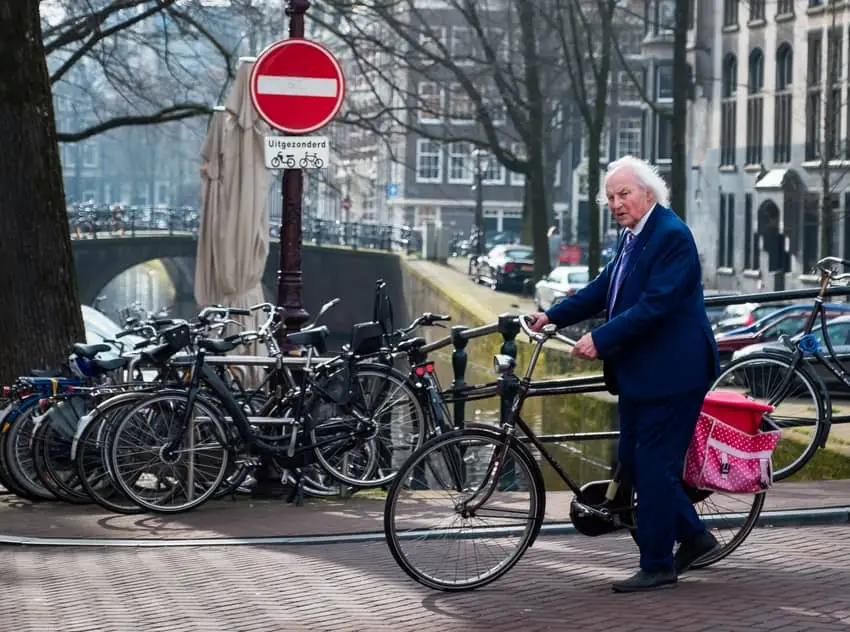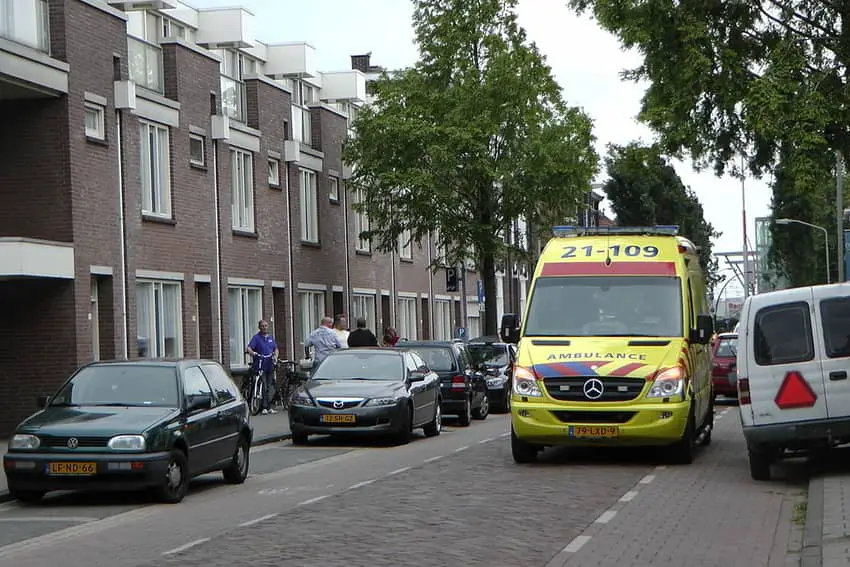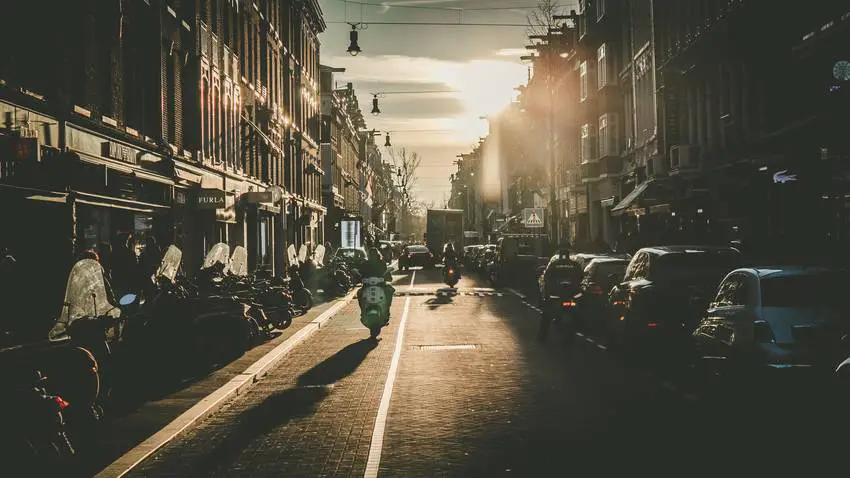The whole world knows the Netherlands as the paradise for bikers and bikes. Every year fights against Denmark for the first position in the list of the highest amount of bikes. However, is it as safe and as regulated by law as it seems?
Cyclists have the right of way in the whole Netherlands. In case of doubt, when there are pedestrians, cars and bikes, bicycles always have priority no matter the circumstance, by law. Moreover, streets and crossing are prepared and bikes are integrated into the traffic scheme.

The Netherlands is a very peculiar place to talk about bikes and rights because the rules that apply to this country don’t exist anywhere in the world. This is the same that happens, legally and commonly known with bikes and right of way. If you want to learn more about this part of the bike culture, keep reading this article.
Right of Way in the Netherlands
The legal sphere in the Netherlands has a particular way of working that is not comparable to anywhere in the world: we can observe in many different social aspects two ways of making law, the written and the known one.
The known law is what I used to refer to the common knowledge every Dutch citizen has of what they can and what they cannot do. This applies to many different aspects of society, with the consumption of drugs, with prostitution and with bikes, of course.

In the case of bikes, we are talking about the right of way: this is “the legal right to go first across a road, before other road users” (Cambridge). In the Netherlands, by law, bikes have priorities over cars, and in practice, for the common knowledge of all Dutch citizens, bikes have priority both over pedestrians and cars.
Of course, this is also possible in the Netherlands because most cities and even some towns have their own roads and a lane for each of the types of traffic parts involved. In other words: a lane for public transportation in the middle, a lane for cars on each side, a lane for bikes also on each side and a sidewalk on each side too.
If you ask any Dutch person in the street what is the priority, all of them are going to tell you the same, this is the hierarchy:
- Ambulances, Police, Firemen
- Public transportation
- Bikes
- Cars
- Pedestrians
In most cases, there are also traffic lights for each and every single lane and traffic party involved: traffic lights are always the ones determining the priority and only if these are not involved the upper hierarchy applies.
Hierarchy: Right of Way
There are many ways one can learn and observe the right of way in the Netherlands that are not necessarily all legally established or taught when you get your driving license: you can observe what is the priority established by traffic police, you can see if when it snows and they have to clear up the lanes, you can see if in case of an accident and how everybody reacts. This is the priority in the order of importance:

- Emergency vehicles always and no matter what has priority above everything else. This is very obvious and something that applies in all the cultures because one can never measure the magnitude of the emergency or the reaction of the emergency vehicle drives. In the Netherlands, these vehicles can go through the middle lane, where public transportation goes, car lanes, of course, and also through the cyclist lane if they need it.
- Public Transportation vehicles have priority over cars, bikes and pedestrians in most cases because if they are stopped they tend to block the rest of the lanes. However, they have to respect bikes, their lanes and distance, waiting for the bike patiently if they are in the same lane. In the centre of Amsterdam, when both trams or busses and bikes have green lights at the same time, trams and busses have priorities over bikes to avoid accidents.
- Bikes have priority over cars and pedestrians. This is not always the case when you are cycling in the middle of a touristic area in Amsterdam. However, if there is an accident, the right of way is always for the cyclist in the street and for the pedestrian in the sidewalk. If the bike was going to fast or in the middle of tourists but in the street, pedestrians are the ones to blame in court. In a roundabout, in a crossing path and in any doubtful situation, bikes have priority and cars and pedestrians have to patiently stop for their turn. Electric bikes behave just like bikes as long as they don’t go over 25 km/h, otherwise, they will be considered motorcycles.
- Cars: unlike in many other countries, cars have less priority than all of the above in cities. In highways and other car-only paths, these have priority, yet in cities, since the affluence of bikes and public transportation is higher, these have priority over cars who have to wait. In the case of taxis, there are two types, one that has priority and can go through the emergency lane or public transportation lane, and one that has to behave like any normal car. This you can know by asking the driver only.
- Pedestrians: unlike many other countries, pedestrians are the weakest link in the chain. This is mostly due to the lower amount of pedestrians in comparison to bikes. These will always have priority in crossing paths if there is a traffic light but not necessarily in other circumstances.
In the case of motorcycles depends on the speed they can reach. Therefore, there are two different cases:
- Those motorcycles called “moped” that only reach 45 km/h, where you don’t need to use a helmet, that SOMETIMES can go through the bike paths and behave like bikes. New legislation established last year (2019), in which the Government allows mopeds to go through certain bike paths, has established a new sign and new controls for these to only go through bike paths if needed and not if they have the option to go through the cars lane.
- Motorcycles that go over 45 km/h have to behave like cars.

Nowadays you will be able to see many electric bikes. So far, even though these bikes can reach a higher speed, they follow the same legislation involving regular pedal bikes.
Dutch Traffic Signs: Bikes
The Dutch traffic is completely controlled by traffic lights, all the lanes as well as specific signs for the specific bike and lane system existing in the country. You can find more information about the legislations according to the Dutch Government here (in English). However, if you want to know more about the specific bike signs, here there are some:

The first sign we see is the one indicating which one is the bikes path and where bikes are obligated to circulate. It is compulsory to go through that lane and if you don’t you are breaking the law and you immediately lose any right of way.
In this same path, there will be traffic lights indicating when to stop, when to continue and some signs similar to the car signs.

This sign is exactly the same as the first one but indicates when mopeds can go in the same lane as bikes. This is the ONLY place when these motorcycles have the same rights as a bike and outside these lanes, they have to behave like cars.
The motorcycles allowed when you see this sign are those that never go faster than 45 km/h and since the legislation established in 2019, with helmet, unless you don’t go over the 25 km/h.

The third sign we see allows the cyclist to decide whether they want to go through this path or not. It is not a compulsory path and this tends to be in certain areas where it would be a little doubtful to cycle through paths in the middle of nature, roads shared with cars, parks, etc.
In this case, the priority that applies follows the hierarchy that we talked about before: pedestrians have to be careful with bikes since these have priority in case of an accident or something happens. Cars need to respect bikes since these are allowed to circulate in the same lane, etc.
Cycling in the Netherlands
Here there is a list of common knowledge that you will have to learn if you decide to cycle in the Netherlands:
- You cannot cycle in the pavement or sidewalks. This area is specific for pedestrians and you can get a fine by doing it. However, every now and then you will see someone doing it.
- You are allowed to cycle two abreast. This is always the same, same as with cars, as long as the left lane is used to help faster circulation. However, three or more are not allowed, even if you see it done.
- Wearing a helmet is not compulsory, not even with electric bikes.
- You are not allowed to use your phone while cycling, or you will get a fine.
- You can cycle with other people in the bike: this is common in the case of parents who bring up to two children in their bikes and even more if you have a cargo bike.